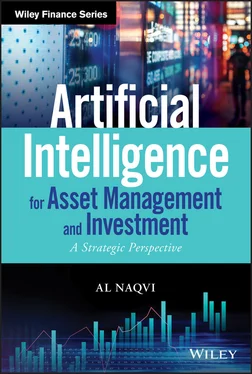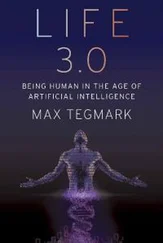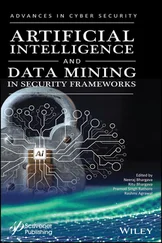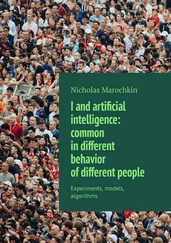The narratives of the dysfunctional firms are different. They display an aura of excitement and fascination about AI. In large legacy firms, the executives tend to use AI as the talking points to impress analysts, boards, and clients. Armies of AI suppliers and consultants occupy floors and floors of companies. Balloons, badges, and billboards of AI centers of excellence serve as power symbols to mark the supremacy and territorial invincibility of the newly architected transformation groups. Managers emerge as celebrities, award winners in supplier-sponsored conferences, and acquire newly found status and power. Futurists are brought in to paint rosy pictures of feel-good scenarios. Lofty and grandiose visions are crafted to elevate spirits and decorate resumes. Like Titanic setting sail for its epic but fateful journey, in exhilarating devotion, teams are structured, missions are developed, speeches are made, budgets are assigned, consultants are hired, suppliers are onboarded, and the transformation programs are launched. But after a year or so a deep feeling of anguish replaces the anticipated achievement. Project failures—whether evidenced by malfunctioning artifacts or by functioning projects with immaterial value contribution—become a discomforting reminder of complexity in producing results from AI. Transformation teams are disbanded—and then reconfigured. The reset button is pushed, and the “rinse, repeat” game starts again.
“Meet our youngest person on the team. She just joined us six months ago. She has developed this nice machine learning program that helps our people match their needs with various benefits,” said the VP of human resources proudly. In the same firm, the head of marketing hired a consulting firm to implement chatbots. The board members were mesmerized to see a chatbot interacting with clients to answer trivial questions. The back-office accounting function went after a different consulting firm to implement what they thought was the best “AI solution”—something known as Robotic Process Automation (RPA). The regulatory department was not going to be left behind and got a different supplier for RPA and went with a different consulting firm. The head of the regulatory department tried to run an internal machine learning project but was unable to get results. Frustrated, she fired the team and restarted the project with another team. Quant departments—those that have solid experience in machine learning—observed all this chaos, laughed, and retreated to their silos. The walls of isolation went up. The strategic quarantining congealed. Each quant team had its own strategic outlook, its own AI team, its own way of doing things. Compliance got its own solution with an AI platform firm—but could not find the data to make the algorithm work. The audit department discovered that their firm has an AI lab set up in a foreign country—apparently a well-kept secret—and reached out to the team of researchers out there. The internal research team was thrilled to be discovered by the US-based functional areas within their own company and began working on the audit solutions. The head researcher remarked, “We do a lot of AI research, but no one in the firm knows about us. Everyone wants their own suppliers.”
The above story of haphazard, unplanned, and chaotic accumulation of AI artifacts is not confined to a single legacy firm. This ailment of becoming theme-less art galleries of AI tools is inflicting nearly all large firms. Amid this chaotic adoption lies the real problem: for all this toil and drudgery, the legacy firms are losing their competitive advantage. A silent but ruthless competition is emerging from the fintech side. A fierce enemy is lurking in the shadows of innovation. The barbarians are not quite at the gate, but they are certainly amassing.
In smaller firms, things are not too different. Since the decision authority is limited to a handful of people, the dysfunction is more localized and centralized. One or two partners, mostly to satisfy their own inquisitiveness or ego, are demanding their IT shops to identify and implement AI solutions to help their business. When doing that, they either issue precise instructions to specify what they want, which tends to be some type of crude and obstinate automation of their existing business model, or they provide the IT shops free rein to explore what can be done. Since most IT shops in small firms are not equipped to handle AI solutions, they scramble to figure out how and where to start. Some reach out to consulting firms. Others try to find AI experts, professors, or AI platform companies. Some even take courses and attempt to develop their own AI solutions. But like their supersized competitors, smaller firms also lack the vision to architect a strategy for what one day will be viewed as the greatest transformation in human history.
Yet when non-quant leaders in investment management sit across data science people, they seem lost. In one of the largest surveys we conducted at the American Institute of AI, we found out what was on the minds of executives. They expressed to us the problems with the sudden rise of AI (paraphrased and expressed as collective sentiment to facilitate understanding):
1 How should I start my AI program? All these consulting firms are telling me different things. I cannot figure out how to start the enterprise program. My boss told me to start something with AI when she returned from a conference (or read an article or met with a consulting supplier).
2 What is cognitive transformation? Everyone I talk to gives different answers.
3 I hear all these terms, AI, RPA, deep learning, neural networks—what should I focus on?
4 How should I demonstrate value from AI?
5 How should I prioritize investment in AI? What comes first and what comes second and so on?
6 How should I develop skills?
7 What should be my business model? Is my business model changing?
8 What should I do about all the dangers of AI they keep warning me about?
9 How do I hire resources?
10 What is AI governance?
On one hand you have leaders who are having trouble understanding the revolution. On the other hand, you have AI, ML, and data science leaders who can drop unfathomable terms and mathematical concepts at lightning speed. So we have two sides in our companies—non-AI people who are feeling pressured to do something but do not know what and how, and the AI teams who are trying to make a contribution but fail to find support, budget allocation, and vision setting from the executive leadership teams.
This book is for everyone who is involved with the investment management world at any level. The reason for that is simple: this book is about transformation. It shows you how to transition from a twentieth-century classical digital era company to a modern AI firm. Transformation affects everyone and opens doors of opportunity for those who are ready to lead and embrace the revolution. This book is your guide to do just that.
If the goal of leading a business is to architect a sustainable competitive advantage, the only advantage that seems to have worked well in investment management firms is the one pursued by firms with well-organized quantamental operations (De Prado, 2018). These firms have created and operationalized a setup for machine learning–centric strategy development and execution, and that has led to creating profits for firms. But a firm is more than its quantamental strategy. Performance is not viewed as the sole criterion of success in investment management (Murphy, 2018). You need a business strategy beyond your quantitative investment strategies developed in your lab. You need a total transformation to function in the new era of AI.
This book answers all your above questions. It also creates a bridge between business and AI professionals and helps develop the strategic plan that both parties need. It gives control to business so that you can lead the transformation of your firm.
Читать дальше












